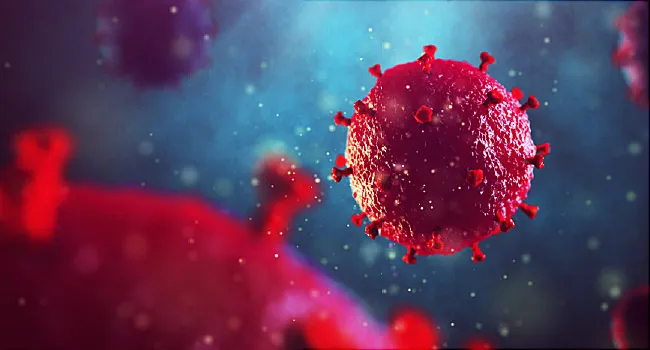Having extraordinary powers - a typical desire for children. But you don't become a superhero with lightning or a spider bite like in the comic. It is genes that give some people unusual abilities.
More than 99 percent of genetic information is the same in all people. However, in less than one percent, the information that makes us special: hair color, skin color, or gender are written down in it. However, this small part of genes also determines whether we have certain diseases or not. Defects in certain DNA sections are usually disadvantageous for those affected. Sometimes, however, the opposite happens: gene mutations help those who carry them to acquire skills that give them an advantage over the rest of humanity.

These super genes really exist:
Super-Sprinter-Gen
- We all have a gene called ACTN3. Few people have it in a variant. However, researchers found in a 2008 study of elite sprinters from Jamaica and the USA. Today we know that in 18 percent of the population, this gene's malfunction causes the formation of a special protein called alpha-actinin-3. This protein controls muscle fibers responsible for the rapid tensioning and relaxation of the muscles, as is necessary, for example, when sprinting or lifting weights. People with this genetic defect can therefore perform unusually well in these areas of sport. Since knowing the defect, the special property has been discovered in some professional sprinters and power athletes.

Super sleeper mutation
- Imagine only sleeping four hours a night. It is hard to imagine how tired you would have to drag yourself through the day. But not the carriers of a genetic mutation in the hDEC2 gene discovered by scientists from the USA and the Max Planck Institute for Experimental Medicine in Göttingen. People with this mutation are fit for the day, even after a few hours of a short nap. Napoleon, Leonardo da Vinci, Voltaire, and Margaret Thatcher are said to have managed with just four hours of sleep. Researchers hope that they will know so much about the background that they can use to help people who have sleep problems.

The supertasters
- The likelihood that you yourself have this superpower is not that low: Around a quarter of the population is equipped with a super sense of taste. This goes back to a gene called TAS2R38, which scientists also call the bitter taste receptor and which is both a blessing and a curse for those affected. Because people with this gene perceive a wide variety of aromas much more intensely, bitter foods such as Brussels sprouts, broccoli, or coffee, for example, taste even more bitter and sweet foods taste even sweeter.
- In evolution, this super-tasting trait brought benefits that could be life-saving. Such people tasted poisonous bitter plants particularly good and protected themselves from poisoning. Today, the consequences are far less spectacular: It is not at all unlikely that you will find them in professions where a good sense of taste is a prerequisite: in the star kitchen or as a sommelier.
- Good-tasters drink bitter coffee with milk and sugar. Also, they often avoid spicy and fatty foods.

Fat Burning Heroes
- Shovel chips and eat pizza whenever you want and without gaining weight. A dream for most, the reality for a few. For example, for a Pakistani family. Both the parents and their nine children have a genetic defect: the APOC3 gene does not work. In this case, the consequences are not terrible - as is the case with most genetic defects - but slow down the fat metabolism and save extra pounds.

Live anti-virus shields
- MOGS gene - the name alone promises something unusual. And it doesn't disappoint. Because the MOGS gene manages to prevent viral diseases. English scientists found this out in two children who had this genetic defect. While their peers regularly suffered from respiratory diseases and otitis media, they were fine except for a few bacterial infections.
LRP5 and the unbreakable bones
- Brittle bones and osteoporosis are particularly a problem as we age because the bone density decreases. The result: rapid bone fractures, as can often be seen in senior citizens after a fall. But not in people with a certain mutation in the LRP5 gene. This gene regulates bone density. While some LRP5 mutations cause a particular susceptibility to osteoporosis, another can have such a positive effect on bone metabolism that the exact opposite happens: The bones become particularly stable, researchers at Yale University discovered.
- According to the researchers' knowledge, people can be identified by their broad jaws and a bony structure on the palate even without a genetic test. The scientists hope now is to imitate the effects of the favorable mutation and thus to be able to generate a high bone density. A drug based on this would be a blessing for people living with osteoporosis or patients with so-called vitreous bone disease. Around 6,000 people in Germany are affected.
Painless through life
-
- No hunger, no pain, and no need to sleep - that sounds like a superhero from the comic. However, these properties are caused by a genetic defect known as the chromosome 6p defect. In reality, however, it doesn't have as many advantages as one would imagine. The ability to feel pain protects us from danger. Children with this genetic defect, in particular, are at risk if, for example, they unsuspectingly leave their hand on a hot stove for too long. The lack of hunger and sleep are also problematic. Fatigue is a reminder of the regeneration time that every organism needs, just as hunger is a reminder of the nutrient intake that keeps us from dying.

CEPT and the cholesterol protection
- Cholesterol is known as a risk factor for vascular calcification and cardiovascular diseases. We usually influence cholesterol levels through diet. But not exclusively. Here, too, researchers discovered a gene that can have a positive impact on health. Its name: CETP (cholesterol ester transfer protein). Its job: the production of a special protein. If this gene is affected by a mutation, the protein is deficient. This has positive effects on the body because the shortage is automatically linked to a high level of beneficial HDL cholesterol. It ensures that cholesterol is transported to the liver more quickly, thereby lowering the cholesterol level in the blood. So it has a vascular protective effect.

Great coffee drinker
- We owe it to American researchers for the knowledge that some people can tolerate more coffee than others without getting nervous or having a racing heart. This has to do with gene variants of the genes BDNF and SLC6A4. They ensure that the body breaks down the caffeine it has absorbed more quickly. The scientists also explain why some sleep well even if they still consume caffeine in the evening.
Congenital protective shield against diabetes
- Diabetes often occurs as a result of an unhealthy diet, obesity, and a sedentary lifestyle. But by no means always. That this is the case that could be due to the failure of a gene that normally regulates the transport of insulin in the cells, its wearers benefit from its protective effect. You are two-thirds less likely to develop diabetes. Various pharmaceutical companies are already researching drugs that use this knowledge.
Protection against HIV
- American researchers found that one in a hundred Europeans has an innate resistance to HIV. Its specialty: a mutation in the receptor of the CCR-5 gene. Without it, HIV cannot enter the host cell. This means that there is no infection. The experts estimate that around 800,000 Germans could be protected against the AIDS-causing virus in this way if it is transmitted through sexual intercourse. Protection against the virus variant "T-tropic-HIV," which is primarily transmitted through blood products and contaminated needles, is not given despite gene mutation.

- Built-in malaria protection
- Sickle cell disease is a danger to its carriers. Because the normally round, smooth blood cells are hard and pointed due to a genetic defect. This makes it easier for them to get caught in each other and clog the blood vessels. This, in turn, leads to a dangerous lack of oxygen. Nevertheless, this gene mutation, which researchers first found in Ghana, also brings a change in which science is particularly interested: carriers of sickle cell disease are also less susceptible to tropical disease malaria. This is transmitted through the bite of a mosquito infected with malaria. Because of their sickle shape, the blood cells are less of a target for the offending parasite.
Healthy face color by gene
- If you can read the glass of wine you have just drunk by the healthy flush of your cheeks, there could be an altered gene. ALDH2 is the name of the genetic make-up. It interferes with the ability of the liver enzyme to convert the alcohol byproduct acetaldehyde into acetate. In the body, acetaldehyde ensures that the smallest blood vessels open, supplying the organs and tissues in the body with blood and oxygen. This can be seen in the face of the carriers of the gene mutation. However, those affected are said to have a higher risk of esophageal cancer.


You must be logged in to post a comment.